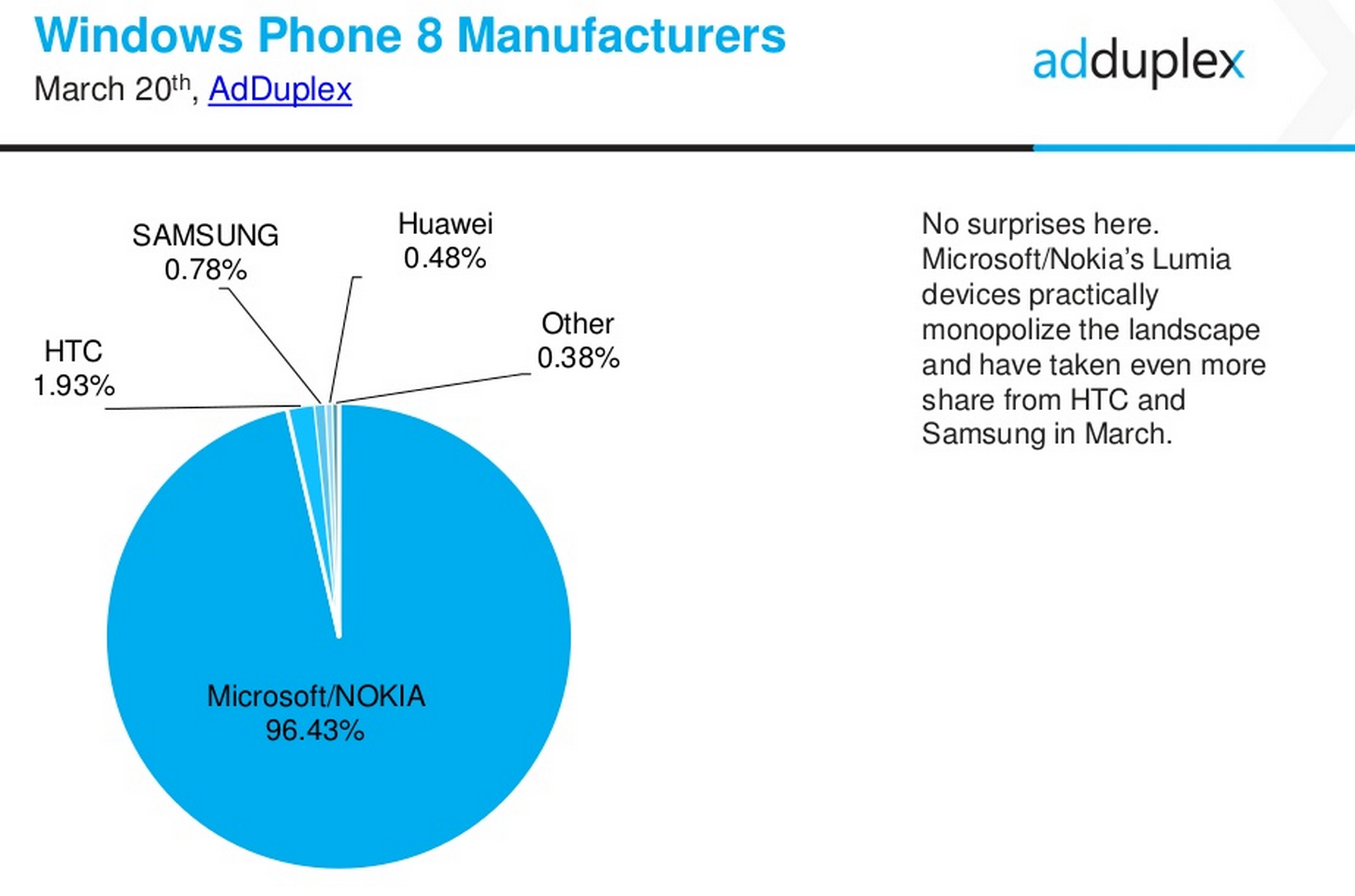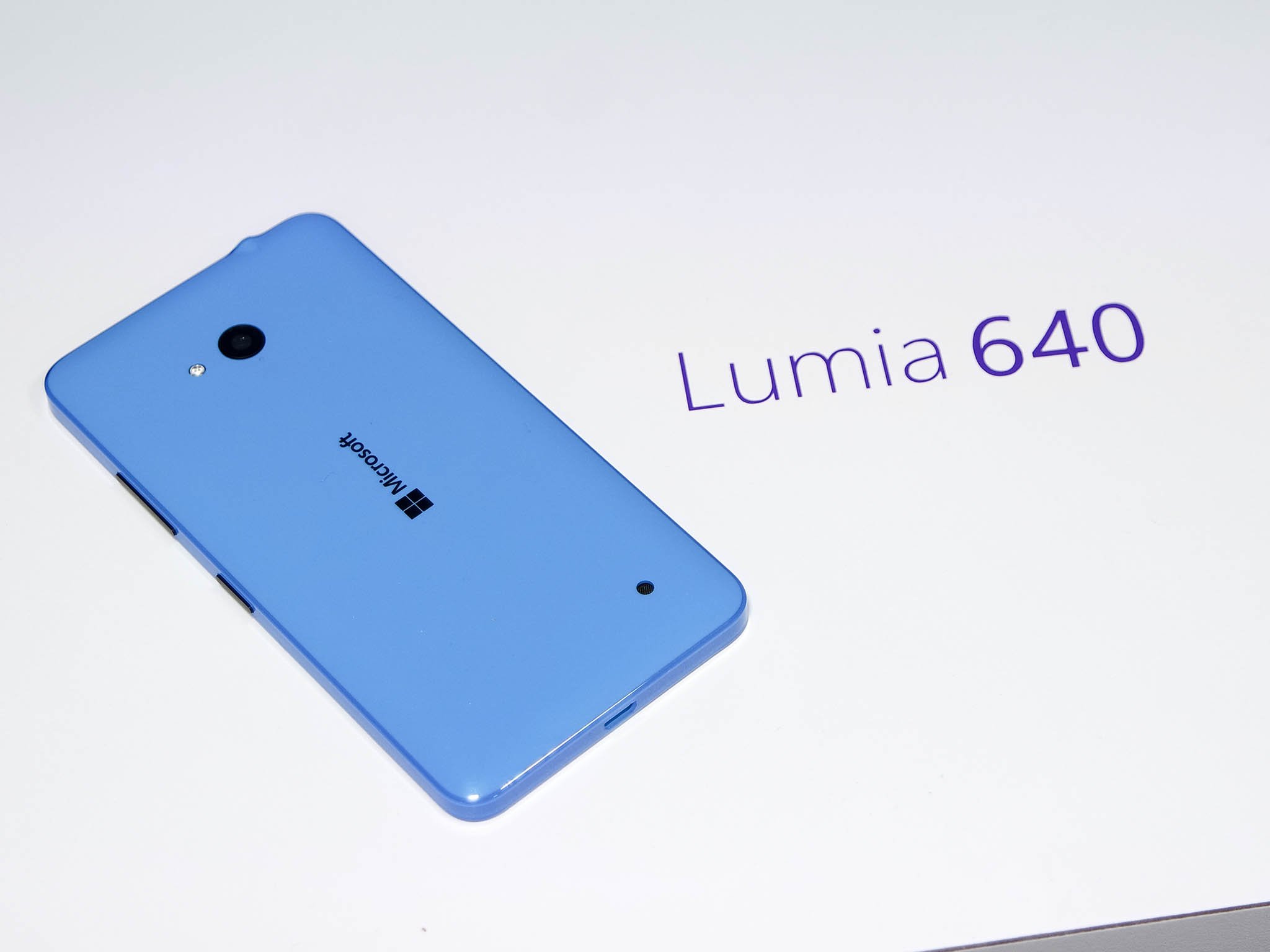New data confirms Lumia 635's ascent to Windows Phone dominance
Low-end and entry-level Lumias like the Lumia 535 and Lumia 635 continue to dominate the landscape, Windows 10 preview phones dip and Microsoft owns more than 96% of the Windows Phone market

AdDuplex (AdDuplex.com) have released their Windows Phone Device Stats for March, 2015. The story of low-end and entry level Windows Phones continue to dominate the landscape while new figures for India, Russia, Brazil, France, Italy, and the US reveal their unique stories.
AdDuplex runs a cross-promotion advertising network running on 5,265 different apps on Windows Phone, and the data was compiled on March 20 for this analysis.

Worldwide
The latest data proves just how entrenched entry-level and low-end Windows Phone hardware is in the Microsoft mobile ecosystem. Nearly 61 percent (60.8%) of all Windows Phone devices worldwide are made up by the Lumia 520, Lumia 530, Lumia 535, Lumia 620, Lumia 625, Lumia 630 and Lumia 635.
This percentage share of the market is increasing.
In terms of high-end phones, the venerable Lumia 920 holds the largest slice of the data at 4.5 percent, followed by the Lumia 925 at 3.1 percent. Presumably newer devices like the Lumia 830, Lumia 930 and Lumia 1520 have not impacted the global percentage enough to get differentiated.
At this point, it is hard to know if Windows Phone is just resonating in the low-end or failing in the high-end due to lack of new and enticing hardware.
Until Microsoft releases a compelling flagship phone later this year with Windows 10, we will not know. However, it should be clear that the Lumia 920 is still being held on to by many who do not see the Lumia 930 as its natural heir to the throne.
Get the Windows Central Newsletter
All the latest news, reviews, and guides for Windows and Xbox diehards.

Lumias rule the roost over HTC and Samsung
It is not surprising to see the Lumia brand making up a massive 96.43 percent of all Windows Phone hardware. This dominance is up nearly half a percentage point from last month's data when it the Lumia total capped at 96 percent.
HTC is holding on at 1.93 percent and Samsung at just 0.78 percent; both dropping from last month's data.
Recently, Microsoft and Samsung have patched up their legal battles to renew some partnerships. It remains to be seen if this détente carries over to Windows Phone. If Samsung is going to make a push back into the Windows Phone world, they likely will not do so until Windows 10 comes out later this year.

Windows 10 on phone dips
Microsoft recently released the Windows 10 preview for phones. Although the number of devices that could run the preview is limited to just a handful of lower-end Lumias, the number peaked at 0.2 percent last month for OS share.
This number has now declined to just 0.1 percent.
Reasons for the drop likely include non-existent updates to that preview (although we are expecting one this week) and the realization that Windows 10 on phone is still too early for people to be using on a daily basis. As a result, people may have rolled back their handsets to Windows Phone 8.1 in anticipation of a more stable release of Windows 10 down the road.

The Lumia 635 is huge in the US, bodes well for Lumia 640
In the United States, the Lumia 635 and Lumia 630 command 32 percent of the Windows Phone hardware. Another 30 percent of the pie is given to the Lumia 520, Lumia 521, and Lumia 530.
The Lumia 635 has gained nearly 6 percentage points over last month, overtaking the Lumia 521 on T-Mobile for top phone. Reasons for the increase in share are attributable to availability on AT&T, Sprint, and T-Mobile in addition to low-cost deals from retailers. Both Amazon and Walmart had the Lumia 635 for just under $50 with no contract, making this LTE-enabled phone a bargain (despite some of its drawbacks).
Microsoft's recently announced Lumia 640 and Lumia 640 XL have yet to go on sale here. However, the market looks favorable to their success. AT&T will carry both new phones while T-Mobile and MetroPCS are offering the Lumia 640 in the coming weeks.

Speaking of carriers, AT&T still commands 32.3 percent of the Windows Phone space with Cricket (21.5%) and T-Mobile (18.1%) grabbing nearly 40 percent.
It is unfortunate that the Lumia 735 was never released in the US as that device may have fared better in this climate. Verizon was slated to get the phone at one point, but those plans have evidently fallen through.

Country Spotlight: Brazil, France, Italy, Russia, and India
When it comes to individual countries, not much has changed. Brazil's big story is the rise of the Lumia 530 and Lumia 630 over the past few months, now making up a combined 30 percent of the Windows Phone Market (with the aging Lumia 520 decreasing slightly).
In France , the Lumia 830 (3.2%) and Lumia 535 (3.5%) are growing and there the Lumia 635 is doing well with 17.4 percent.
In Italy , one of Microsoft's largest markets for Windows Phone, the Lumia 535 now has 6.1 percent of the market and is now in the fifth spot. The Lumia 630 and Lumia 635 taking a combined 23 percent.
Russia is nearly evenly divided with Lumias with the entry-level phones (Lumia 520, Lumia 535, and Lumia 630) making up the largest share. The Lumia 630 has now passed the Lumia 520 to be the number one reported Windows Phone in that market.
Finally, in India , the Lumia 535 continues to gain on the Lumia 520. The latest entry-level phone is evidently selling very well, gaining 4 percentage points over last month. It now constitutes nearly 20 percent of the Windows Phone market share, creeping up on the Lumia 520's 23 percent.
A full 84 percent of Windows Phones in India are Lumia 7xx series or lower, reflecting the cost dynamics of that emerging market.

Conclusions
Until Microsoft releases Windows 10 on phones, including new higher-end hardware, not much can change in regards the growth trajectory of entry-level devices.
The good news is that devices like the Lumia 535 and Lumia 635 are doing comparatively well for Windows Phone. Between full availability, bargain pricing, and feature set, customers are responding well to the selection.
The fact that entry-level and mid-range Lumias are being adopted by consumers implies that newer phones, like the Lumia 640 and Lumia 640 XL have an excellent chance of being mini-hits themselves. Reasons for this conclusions include favorable responses from users in the design, pricing, and specifications of both devices, including the renewed focus on larger, higher-quality displays, and improved rear-cameras.
The Lumia name is also still resonating with consumers despite the shift from Nokia to Microsoft branding. It remains to be seen if white-label companies like BLU, who should be releasing LTE devices soon, can make inroads into Microsoft's dominance. Ironically, Microsoft welcomes the competition to help even out device the landscape with their hardware partners.

Daniel Rubino is the Editor-in-chief of Windows Central. He is also the head reviewer, podcast co-host, and analyst. He has been covering Microsoft since 2007 when this site was called WMExperts (and later Windows Phone Central). His interests include Windows, laptops, next-gen computing, and wearable tech. He has reviewed laptops for over 10 years and is particularly fond of 2-in-1 convertibles, Arm64 processors, new form factors, and thin-and-light PCs. Before all this tech stuff, he worked on a Ph.D. in linguistics, performed polysomnographs in NYC, and was a motion-picture operator for 17 years.
